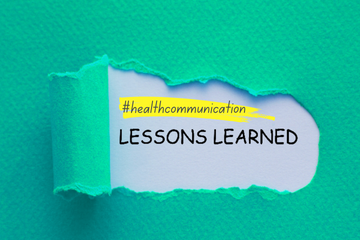You’re reading Lessons Learned, which distills practical takeaways from standout campaigns and peer-reviewed research in health and science communication. Want more Lessons Learned? Subscribe to our Call to Action newsletter.
As infectious diseases continue to affect our communities, we need new strategies to increase vaccination. A recent study published in Health Communication (DOI: 10.1090/10410236.2023.2289280) explores how attitudes and resistance to vaccination are affected by the use of first-person stories explaining why the narrator changed their mind about vaccination. The stories included the narrator presenting both sides of arguments for and against vaccines, and explaining why they changed their mind with new information. The efficacy of these both-sided narratives to change attitudes and resistance to COVID vaccination was compared to one-sided narratives where the author always intended to get vaccinated. The study compared these messaging techniques among 384 unvaccinated individuals.
What they learned: When compared to one-sided narratives, both-sided narratives increase positive attitudes and reduce resistance towards vaccination among those with a high amount of hesitancy about vaccination. More specifically, attitudes and resistance change when the individual identifies the narrator as someone who thinks and behaves like they do, which increases the perceived strength of the argument for receiving a vaccination.
Why it matters: Vaccine hesitancy continues to influence rising cases of diseases like COVID and measles. Developing new messaging techniques to reach audiences who are skeptical about vaccines is vital to improving the health of our communities.
➡️ Idea worth stealing: When communicating with vaccine-hesitant people, use first-person sources whose past beliefs align with the target audience. In helping them to construct their story, focus on elements that may increase the argument’s strength, including giving important reasons that someone may have initially rejected the vaccine and what got them to change their mind.
What to watch: How communicators continue to evolve their strategies to encourage increasing vaccine uptake.




